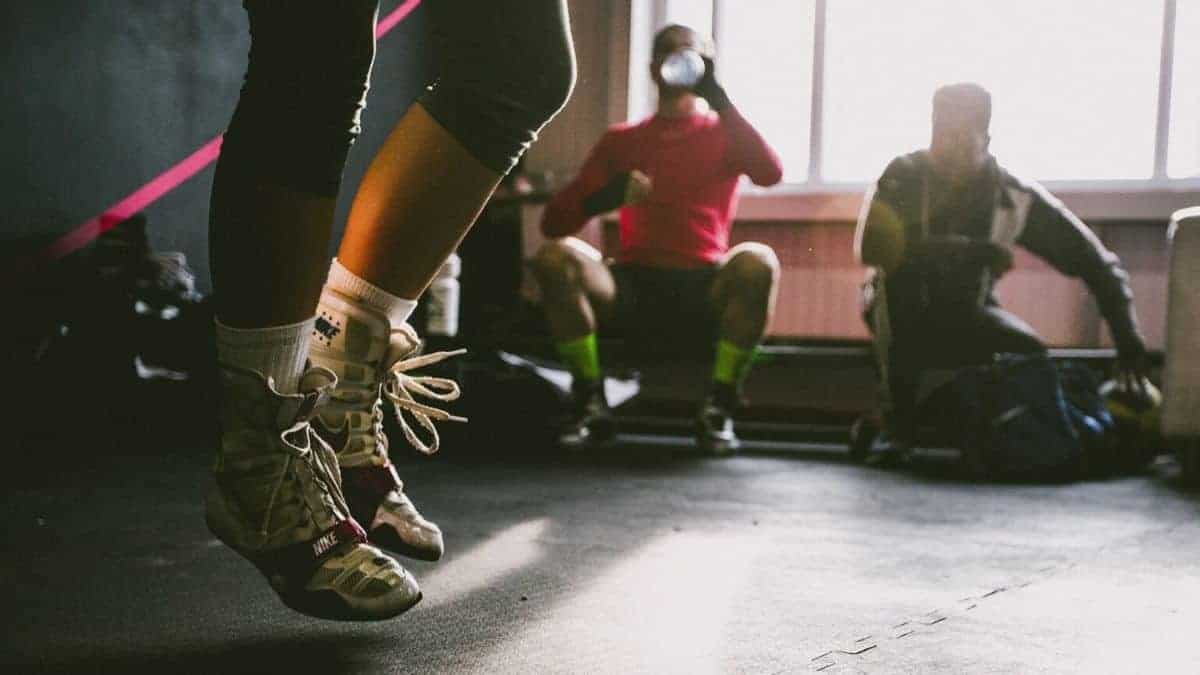Working out is not only a great way to stay fit, but also an opportunity to expand your Spanish vocabulary and use in a daily situation. If you like exercising or you’re simply going to the gym in a Spanish speaking country, in this article you’ll find some useful vocabulary that we use at the gym, such as workout words as well as equipment, facilities, and vocabulary for accessories.
We will also provide you with phrases so you can interact with personal trainers and other gym members. By the end of this article, you should feel more confident to talk about your workouts in Spanish and to express your objectives when going to the gym.
Table of Contents
Talking About Your Workouts in Spanish: ‘Hacer’ and ‘Tocar’
When talking about the gym and exercising in Spanish, the verb ‘hacer’ and ‘tocar’ are very useful. As you may know, depending on the context, Spanish words can have different meanings. This is the case of ‘hacer’ and ‘tocar’. Here are some of the most common ways to use these Spanish verbs to talk about sets and routines.
Hacer – I’m working on…/To do
Although there are Spanish verbs to talk about the activities you can do at the gym, Spanish speakers use ‘hacer’ to describe their workouts and to list their routines and sets. There are three options you can use with this verb:
Option 1: To talk about body parts/muscles groups in Spanish
In Spanish, we can use the verb hacer to talk about either the body parts or the muscle groups that we’re planning to exercise. In this context, hacer is translated as work out or work on. Here are some examples:
Hacer + body part/muscles
| Mañana haré brazos y piernas | Tomorrow I’ll work on arms and legs |
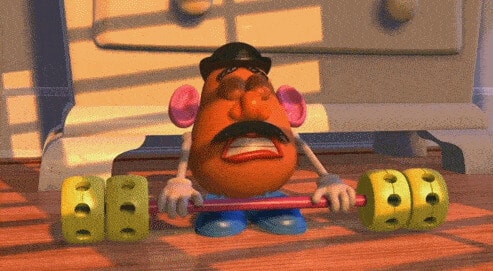
Option 2: To talk about specific workouts and exercises in Spanish
Hacer is also very useful when you want to talk about the exercises and activities you have to do. In this case, hacer is translated as ‘to do’.
Hacer + activity/exercise
Hoy haré sentadillas y cardio Today I’ll do squats and cardio
Los jueves hago pesas, planchas y abdominales On Thursdays, I do weights, push ups and abs
Notice that in the previous examples you can use ‘hacer’ to talk generally about the exercises and activities you want to do at the gym. However, you can also add some extra information to be more specific about your workouts. For example:
Hacer + number of times + activity/exercise
Hoy haré diez sentadillas Today I’ll do ten squats
Todos los días hago treinta abdominales y veinte planchas Everyday I do thirty sit-ups and twenty push-ups
If instead of the number of times you’re going to do an exercise, you wanted to talk about the minutes you’ll be working out, you should tweak the previous structure. Be aware that in this case, the translation of hacer may vary.
Hacer + minutes/time + de + activity/exercise
Entre cada serie, hago cinco minutos de cuerda Between each set, I skip the rope for five minutes
Después de mi rutina, hago diez minutos de estiramientos After my routine, I stretch for ten minutes
Todos los días hago una hora de cardio y media hora de pesas Everyday I do one hour of cardio and thirty minutes of weights
Option 3: To talk about your reps and sets in Spanish
Hacer is also very useful when you want to talk about the exercises and activities you have to do. In this case, hacer is translated as ‘to do’.
Hacer + number + de + reps + de + activity/body part
Ahora voy a hacer veinte repeticiones de sentadillas y de brazos Now I’m going to do twenty reps of squats and arms
Of course, you can also use hacer to talk about the sets you’re going to do. It’s up to you if you only want to talk about your sets and reps or if you want to mention the exercise, activity or body muscle you are going to workout.
Hacer + number + de + sets + de + number + de + repeticiones
Mañana voy a hacer 3 series de 20 a 25 repeticiones Tomorrow I’m going to do 3 sets of 20 to 25 reps
El instructor me dijo que hiciera 2 series de 10 repeticiones de hombro y dos series de brazo The instructor told me to do two sets of ten reps of shoulders and two sets of arms
Tocar – ‘It’s leg’s day’
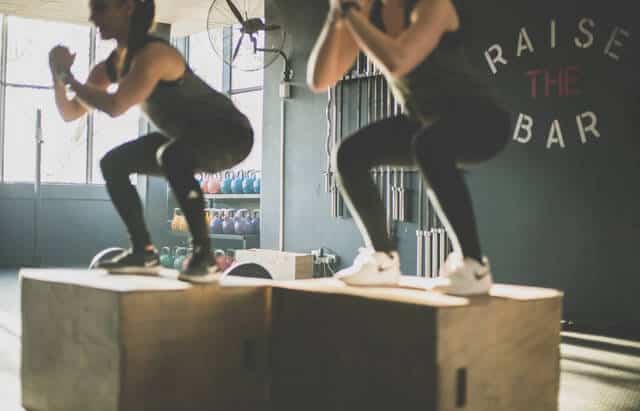
Even though ‘tocar’ is the direct translation of ‘to touch’, when using this verb to talk about exercise in Spanish, its meaning is completely different. Usually, we use tocar to talk about body parts or muscles groups we are going to work out on a certain day. As a result, in this context, tocar is close in meaning to the English expression: ‘it’s leg’s day’. Here is how we use it:
To express the body parts or muscles you’re going to work out
Me toca + hacer/entrenar (optional) + body part/muscles
Hoy me toca entrenar brazos y piernas Today is arms and legs day
Los martes me toca abdomen y cardio Tuesday is abs and cardio day
“Mañana me toca hacer biceps y cuadriceps Tomorrow is biceps and quadriceps day
To express the activities you’re going to do at the gym
Tocar can also be used with other verbs to talk about the activities we need to do at the gym. Be aware that in this situation, tocar will be translated as ‘I have to’.
Me toca + activity
| Hoy me toca correr 10 minutos | Today I have to run 10 minutes |
| El jueves me toca saltar la cuerda | On Thursday I have to skip rope |
Notice that Me toca is a Spanish structure for the first person (Yo/I). Therefore, you can use it to talk about your routines and activities. If your personal trainer or instructor was explaining to you your weekly routine, the structure should change a little bit.
Te toca + hacer/entrenar + body part/muscles
| Hoy te toca entrenar brazos y piernas | Today is arms and legs day |
Te toca + activity
| Hoy te toca correr 10 minutos | Today you have to run 10 minutes |
Asking for Exercises/Workouts in Spanish
If you need some help to build your workout routine in Spanish, it’s very likely that you need to ask your personal trainer or instructor for some recommendations. Here are some phrases, you could use for this purpose.
Asking for a workout routine
| ¿Me puedes recomendar una rutina? | Can you recommend me a routine? |
| ¿Qué rutina me recomiendas? | What routine you would recommend me? |
Even though this question is very simple, you could also modify it to ask for a workout for a specific part of your body or to accomplish certain goals.
¿Me puedes recomendar una rutina + para + body part/objective?
¿Qué rutina para + body part/objective me recomiendas?
Contrae los músculos y aumenta el peso Contract your muscles and increase the weight
¿Me puedes recomendar una rutina para piernas? Can you recommend me a leg workout?
¿Qué rutina para fortalecer los músculos me recomiendas What routine would you recommend me to strengthen my muscles?
¿Me puedes recomendar una rutina para bajar de peso? Can you recommend me a workout to lose weight?
Asking for an exercise
The previous questions can also be used to ask your instructor or personal trainer for some exercises. In this case, you’ll need to make some minor modifications.
¿Me puedes recomendar un ejercicio/ejercicios + para + body part/objective?
¿Qué rutina para + body part/objective me recomiendas?
¿Qué ejercicios para fortalecer los músculos me recomiendas What exercises would you recommend me to strengthen my muscles?
¿Me puedes recomendar un ejercicio para brazos? Can you recommend me an exercise for arms?
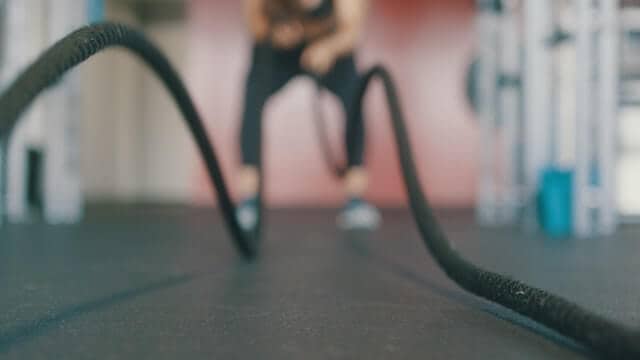
Interacting with Other Gym Members in Spanish
Even though interacting with gym members may not be your main objective, it’s useful to know some basic Spanish phrases for such situations. After all, there will be times where you want to know if someone is using a machine or if they’re about to finish. Here are some phrases that will help you with this.
Asking if someone is using a machine/equipment
The following question is very simple and general since by the context it will be clear the machine you’re talking about.
| ¿Estás usando este aparato? | Are you using this machine? |
For this situation, another option you have is to ask this person if he/she stopped using the machine you need.
¿Ya no necesitas este aparato? You don’t need this machine anymore?
In this case, we use ‘ya’ which usually means ‘already’ to mean ‘anymore’.
Ask if you can share a machine/equipment
Sometimes you may be in the situation that you and another person need the same machine. In this case, your best approach is trying to share the machine. In Spanish, we use one of the following expressions to make this proposal.
| ¿Podemos compartir este aparato? | Can we share the machine? |
This question is very common and for an informal situation like going to the gym it may sound too formal. So, Spanish speakers tend to use more the next one:
¿Podemos hacer una serie y una serie? Can we do one set and one set?
Expressing how long you will be needing the machine
In the previous sections, we discussed some questions you can use to interact with other gym members in Spanish. But if these questions were asked to you, how would you answer? The following phrases express that you are using a certain machine but also they express for how long you are going to be using it.
Me falta + una + serie
Me faltan + number + serie/repeticiones
| Spanish | English |
| Persona 1: Disculpa, ¿estás usando este aparato? | Person 1: Excuse me, are you using this machine? |
| Tú: Sí, pero sólo me falta una serie. | You: Yes, but I just need to do one more set. |
| Spanish | English |
| Persona 1: Disculpa, ¿ todavía necesitas este aparato? | Person 1: Excuse me, you still need this machine? |
| Tú: Sí, sólo me faltan dos series. | You: Yes, I’m just missing two sets. |
Notice that we use me falta when we are talking about a single set. However, if you’re talking about more than one set or reps, you need to use me faltan.
Essential Gym Vocabulary in Spanish
In the previous section, we discussed that tocar and hacer are very useful to talk about your workout in Spanish. So, in order to use these verbs, it’s important that you learn some Spanish gym vocabulary. Here are some of the most common words you may hear when going to the gym.
Spanish Verbs to Use at the Gym
As mentioned earlier, hacer and tocar can be used to generally talk about workouts, sets, reps and exercises in Spanish. However, we also have some Spanish verbs for exercise that are going to help you to express yourself more accurately.
Spanish verbs to describe your workout’s objectives
If you signed up for a gym and you’re ready to start working out, it’s very likely that the instructor or your personal trainer will ask you about the goals or objectives you want to accomplish. Being able to express yourself in Spanish, will allow you to get into a good routine. Here are some of the most common Spanish verbs we use to talk about objectives and goals.
| Tonificar | Tone up |
| Fortalecer | Strengthen |
| Perder Peso | Lose weight |
| Ganar Peso | Gain weight |
| Ponerse en forma | Get back into shape |
| Mantenerse en forma | Stay in shape |
| Relajarse | Relax |
| Descansar | Rest |
When talking about workout goals in Spanish, we use the following structure:
Querer (conjugated) + Verb to describe goals (infinitive)
Quiero bajar de peso I want to lose weight
Andrés y Marco van al gimnasio porque quieren mantenerse en forma Andrés and Marco go to the gym because they want to stay in shape
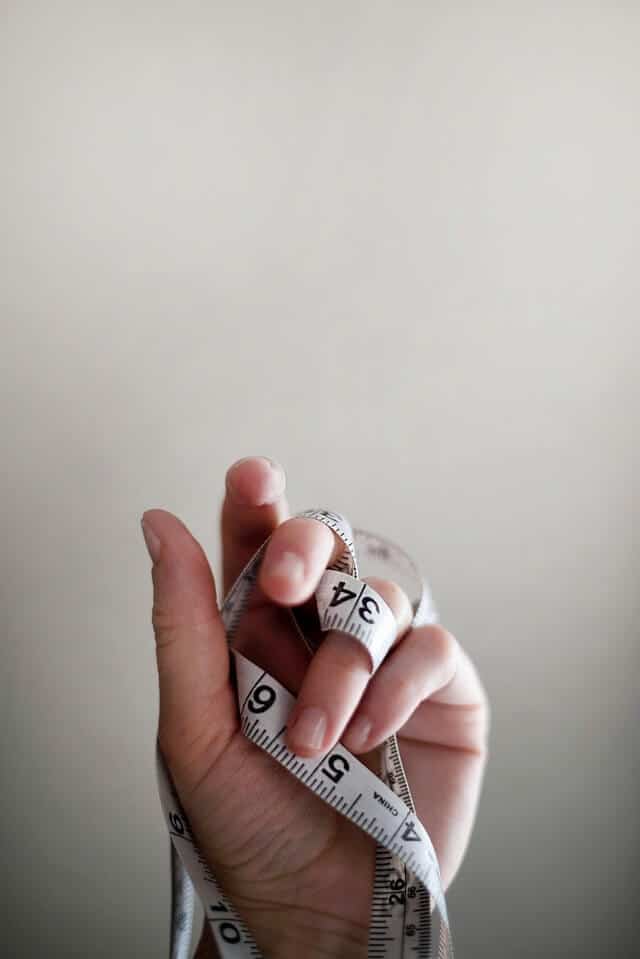
Although many of these Spanish verbs talk about general objectives, you can also use them to point out the specific goals you want to achieve. For instance:
Querer (conjugated) + Verb to describe goals (infinitive) + body part
Quiero perder peso y tonificar el abdomen I want to lose weight and tone up my legs
Queremos fortalecer los hombros y los brazos We want to strengthen our shoulders and arms
Spanish verbs to talk about workouts/activities
The following list contains some common verbs that both you or the instructor may use when talking about your workouts in Spanish. Usually, these verbs are used to give further instructions or advice when exercising at the gym.
| Calentar | Warm-up |
| Respirar | Breathe |
| Contraer | Contract |
| Estirar | Stretch |
| Empujar | Push |
| Girar | Turn |
| Trotar | Jog |
| Levantarse | Stand up |
| Saltar | Jump |
| Alternar | Alternate |
| Correr | Run |
| Elevar | Raise |
| Levantar pesas | Weight lifting |
| Aumentar | Increase |
| Mejorar | Improve |
| Saltar la cuerda | Skipping rope |
| Inclinarse | Lean forward |
| Ponerse de lado | Lie on your side |
| Ponerse boca abajo | Face down |
| Ponerse boca arriba | Face up |
Contrae los músculos y aumenta el peso Contract your muscles and increase the weight
Cuando termines, no te olvides de estirar When you finish, don’t forget to stretch
Eleva los brazos y contrae los bíceps Raise your arms and contract your biceps
Para calentar, puedes saltar la cuerda o trotar en la caminadora To warm-up, you can skip rope or jog on the treadmill
Spanish Body Parts and Muscle Groups to Workout
As you may have noticed in the previous section, knowing some Spanish body parts is very important when exercising in Spanish. The following list contains some of the most common body parts that you are going to need to talk about your routines or your goals with your personal trainer. Be aware that you can use this vocabulary with hacer and tocar. And if you or your personal trainer want to be more precise, you can also use the verbs we discussed in the previous section.
| Cuello | Neck |
| Hombros | Shoulders |
| Brazos | Arms |
| Antebrazos | Forearm |
| Bíceps | Biceps |
| Triceps | Triceps |
| Codo | Elbow |
| Muñeca | Wrist |
| Pecho/Pectorales | Chest |
| Abdominales | Abs |
| Cadera | Hip |
| Espalda | Back |
| Espalda baja | Lower back |
| Cuádriceps | Quadriceps |
| Glúteos | Buttocks |
| Pierna | Leg |
| Rodilla | Knee |
| Tobillo | Ankle |
| Pantorrilla | Calve |
| Articulación | Joint |
Hoy vamos a hacer espalda y hombros Today we’re going to workout back and shoulders
Los martes hago piernas y abdomen On Tuesdays I work on my legs and abs
Relaja el cuello y contrae el abdomen Relax your neck and contract your abs
Basic Exercises in Spanish
Although there are many things you can do at the gym, in this list, we compiled some of the most common basic exercises in Spanish. This vocabulary can be used with any of hacer or tocar structures we discussed.
| Sentadillas | Squats |
| Flexión/Plancha/Sentadilla | Push-ups |
| Abdominales | Crunches/Sit-ups |
| Entrenamiento de circuito | Circuit-training |
| Pesas libres | Free-weights |
| Entrenamiento cruzado | Cross-training |
| Ejercicios para el torso | Core-training |
| Calentamiento | Warm-up |
| Caminata | Walking |
| Peso muerto | Deadlift |
| Elevación de talones | Calf-raise |
| Dominadas | Pull-ups |
| Flexiones de bicep | Dumbbell curls |
| Press de banca/fuerza de pecho | Bench press |
La próxima semana empezaré a hacer sentadillas y pesas libres Next week, I’ll start doing squats and free weights
En mi entrenamiento de esta semana, me tocan diez minutos de calentamiento In this week’s workout, I have to warm up for ten minutes
Workout Machines & Equipment in Spanish
If you wanted to be more specific about your workouts in Spanish, you should include some machine and equipment vocabulary. Here are some of the most common words that you may need at the gym in Spanish.
| Cinta de correr/Caminadora | Treadmill |
| Elíptica | Elliptical machine |
| Bicicleta estática | Stationary bike |
| Mancuerna | Dumbbell |
| Pesas | Weights |
| Remo | Rowing machine |
| Aductores | Adductor |
| Contractor | PecDec |
| Barra de pesas | Barbell |
| Pesas rusas | Kettlebell |
| Balón medicinal | Medicine ball |
| Saco de boxeo | Punching bag |
| Barra de levantamiento | Pullup bar |
| Banda de resistencia | Resistance band |
| Tapete de yoga | Yoga mat |
¿Dónde están las elípticas? Where are the elliptical machines?
Hacer sentadillas con el balón medicinal es bueno para tonificar las pantorrillas Doing squats with the medicine ball is good for toning up your calves
Gym’s Facilities in Spanish
| Vestuarios/Vestidores | Changing rooms |
| Taquillas | Locker |
| Duchas | Showers |
| Sala de yoga | Yoga studio |
| Sala de spinning | Spinning studio |
| Salón de baile | Dance studio |
| Salón de usos múltiples | Multi-purpose studio |
| Área de pesas/salón de pesas | Weight room |
| Recepción | Front desk |
| Oficina | Office |
| Área de estiramiento | Stretch area |
| Área de peso libre | Free weights area |
| Zona Cardiovascular | Cardiovascular area |
La sala de yoga abre a las 7:00 am The yoga studio opens at 7:00 am
Todos los miembros tienen acceso a las duchas y vestidores All members have access to the showers and changing rooms
What do you wear in the gym in Spanish – Accessories & Clothes
| Toalla | Towel |
| Candado | Padlock |
| Camiseta | T-shirt |
| Shorts | Shorts |
| Calcetines | Socks |
| Botella de agua | Water battle |
| Muñequera | Wristband |
| Rodillera | Kneepad |
| Sudadera | Sweatshirt |
| Mochila | Backpack |
| Mallas | Tights/Leggins |
| Gorra | Hat |
| Pants/Pantalones de ejercicio | Sweatpants |
| Camiseta sin mangas | Tank top |
| Guantes | Gloves |
| Cinturón de levantamiento de pesas | Weightlifting belt |
| Top deportivo | Training bra |
| Pantalones de yoga | Yoga pants |
Todos los usuarios deben traer su propia toalla All members must bring their own towel
Mi mochila y mi botella están en mi taquilla My backpack and water bottle are in my locker
Other Useful Vocabulary To Use At The Gym
| Membresía | Membership |
| Entrenador personal | Personal trainer |
| Rutina | Routine |
| Entrenamiento | Workout |
| Serie | Set |
| Carnet de socio/Tarjeta de membresía | Membership card |
| Pase para un día | Day Pass |
| Intervalos | Intervals |
| Repeticiones | Reps |
| Descanso | Rest |
Después de tres series, descanso un minuto After three sets, I rest for a minute
Para acceder al gimnasio, los usuarios necesitan traer su carnet de socio To access the gym, users must bring their membership card
Expressions To Describe Your Body and Fitness State
Here are some of the most common phrases in Spanish to describe your body and the progress you are making at the gym. Be aware that some of them can also be used to express the goals you want to achieve.
| En buena forma | Good shape |
| Tener cuadritos/Tabla de chocolate | Six-packs |
| En mala forma | Poor shape |
| Tonificado | Toned |
| Sedentario | Sedentary |
| Musculoso | Brawny |
| Cansado | Tired |
| Adolorido | In pain |
| Atlético | Athletic |
Gracias al ejercicio estoy en buena forma Thanks to the exercise I’m in good shape
Hoy no fui al gimnasio porque estoy muy cansado Today I didn’t go to the gym because I’m too tired
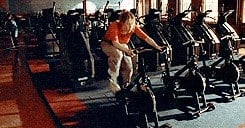
Notice that, aside from tener cuadritos, these phrases work with the verb estar because they’re expressing a state that can easily change. Learning how and when to use the verb estar in Spanish is crucial for your fluency. Since this verb is very important in Spanish but also may be difficult to understand, I wrote this article on when to use estar.
Wrapping Up
Going to the gym is a perfect opportunity to practice your Spanish and to learn more vocabulary that will help you become more fluent. That’s why in this article, we discussed some of the most common Spanish words and vocabulary for working out and exercising. We also learned how to use the verb ‘hacer’ and ‘tocar’ when going to the gym and some useful phrases to interact with other gym members. Hopefully, now you feel more confident to use your Spanish at the gym.

